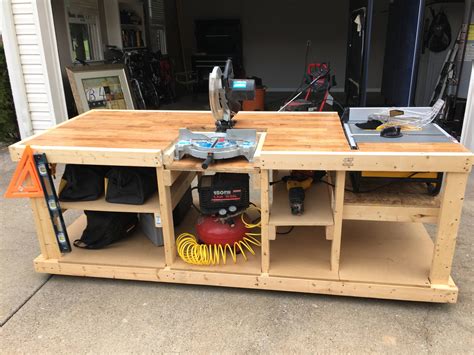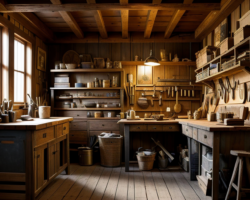Are you looking to upgrade the furniture in your home office but can’t seem to find the perfect pieces? Perhaps it’s time to take matters into your own hands and build custom furniture that perfectly suits your needs and style. In this DIY workshop, we will guide you through the process of building functional and stylish furniture for your home office. From choosing the right materials to understanding joinery techniques, we’ll cover everything you need to know to get started. We’ll also provide essential tips for measuring and cutting wood, as well as finishing techniques to enhance the look of your furniture. And of course, we’ll troubleshoot common issues that may arise during your DIY furniture building journey. So grab your tools and let’s get started on creating the home office of your dreams!
Choosing the Right Materials for Your Furniture
When it comes to choosing the right materials for your furniture, there are several factors to consider. Firstly, you’ll want to think about the overall style and design of the piece. For a more rustic, natural look, wood such as oak or pine might be a good choice. On the other hand, if you’re aiming for a more modern, sleek design, materials like glass or metal could be more suitable.
Another important consideration is the durability of the materials. If you’re building a piece of furniture that will be heavily used, such as a dining table or a coffee table, you’ll want to choose materials that can withstand wear and tear. Some options for durable materials include hardwoods like maple or cherry, as well as metals like steel or aluminum.
Cost is also a major factor when it comes to choosing materials for your furniture. While some materials might be more expensive upfront, they could save you money in the long run by lasting longer and requiring less maintenance. On the other hand, if you’re on a budget, you may want to consider more affordable options such as plywood or laminate.
Finally, it’s important to think about the environmental impact of the materials you choose. If sustainability is important to you, you might want to look for materials that have been responsibly sourced and manufactured. Reclaimed wood, bamboo, and cork are all examples of eco-friendly materials that can be used to create beautiful, sustainable furniture.
Designing Functional and Stylish Furniture Pieces
Designing furniture that is both functional and stylish can be a challenging but extremely rewarding process. It involves taking into consideration the purpose of the furniture piece, the available space, and the overall aesthetic of the room. One of the key aspects to consider when designing furniture is the materials used. Choosing high-quality, durable materials is essential in creating furniture that is not only practical but also aesthetically pleasing.
Another important factor to take into account is the ergonomics of the furniture. Designing functional pieces means ensuring that they are comfortable and easy to use. This can involve creating furniture with thoughtful ergonomic features such as adjustable height, proper back support, and ease of movement.
In addition to functionality, the style of the furniture is also crucial in the design process. Incorporating aesthetically pleasing elements such as clean lines, unique textures, and visually appealing colors can elevate the overall look of the furniture piece. Understanding the balance between functionality and style is essential in creating furniture that is not only beautiful but also practical.
Ultimately, designing functional and stylish furniture pieces is a highly creative and complex process. It requires a careful consideration of materials, ergonomics, and style in order to create furniture that is not only visually appealing but also practical and comfortable to use.
Essential Tools and Equipment for DIY Furniture Building
When it comes to DIY furniture building, having the essential tools and equipment is crucial for a successful project. One of the most important tools is a good quality saw, whether it’s a circular saw, jigsaw, or table saw, depending on the type of cuts you need to make.
Another important tool is a power drill, which is essential for driving screws and drilling holes. Make sure to have a variety of drill bits and screwdriver attachments to cover all your needs.
A measuring tape and combination square are also necessary for accurate measurements and angles. Additionally, having woodworking clamps of various sizes will ensure that your pieces stay in place during assembly.
Finally, don’t forget about safety equipment such as protective goggles, ear protection, and a dust mask to keep yourself safe while working with power tools and wood.
Understanding Joinery Techniques for Sturdy Furniture
One of the most important aspects of building sturdy and durable furniture is understanding the various joinery techniques available. Joinery techniques are the methods used to connect two pieces of wood together to form a strong and stable joint. There are a wide variety of joinery techniques, each with its own strengths and weaknesses, making it important for furniture builders to have a good understanding of the different options available.
One common joinery technique is the dado joint, which involves cutting a slot across the grain of one piece of wood and fitting another piece into the slot. This type of joint is often used to create strong, sturdy shelves in bookcases and cabinets. Another popular joinery technique is the mortise and tenon joint, which involves cutting a square or rectangular hole (the mortise) in one piece of wood and fitting a corresponding projection (the tenon) from another piece into the hole. This type of joint is commonly used in table and chair construction.
In addition to these, there is also the dovetail joint, which is known for its resistance to being pulled apart and is often used in drawer construction. The butt joint, while not as strong as some other options, is simple to construct and is often used in basic furniture construction. Understanding the strengths and weaknesses of each joinery technique is crucial in ensuring that the furniture being built will be sturdy and long-lasting.
By having a good understanding of joinery techniques, furniture builders can create pieces that are not only visually appealing but also structurally sound. Whether constructing a simple bookshelf or a complex dining table, selecting the right joinery techniques is essential in achieving the desired level of sturdiness and longevity in furniture construction.
Tips for Properly Measuring and Cutting Wood
When undertaking a DIY furniture building project, one of the most important skills you will need is the ability to properly measure and cut wood. Accurate measurements and precise cuts are essential for the success of your project, and can make a significant difference in the final outcome of your furniture piece.
One tip for properly measuring wood is to always use a reliable measuring tape or ruler. It is crucial to use the same measuring tool consistently throughout your project to ensure uniformity and accuracy. Additionally, double-check your measurements to avoid mistakes and reduce the risk of wasted material.
When it comes to cutting wood, using the right tools is essential. A high-quality handsaw or power saw can make a significant difference in the precision and cleanliness of your cuts. Take the time to learn proper cutting techniques and always use the appropriate safety equipment to avoid accidents.
Another important tip for cutting wood is to mark your measurements clearly and accurately before making the cut. Using a straight edge or a square can help ensure that your cuts are straight and precise. It is also advisable to make test cuts on scrap wood to practice your technique before making the final cuts on your project pieces.
Finishing Techniques to Enhance the Look of Your Furniture
When it comes to finishing techniques for your furniture, there are several options to consider that can really make your piece stand out. One of the most popular techniques is staining, which can add depth and color to the wood while still allowing the natural grain to show through. Another option is painting, which allows for unlimited color choices and can completely transform the look of a piece. You could also consider using a clear coat or varnish to protect the wood and give it a glossy, professional finish.
Another important aspect of finishing your furniture is sanding. This step is crucial for achieving a smooth and professional-looking surface. By using a variety of sandpaper grits, you can ensure that your piece is free of imperfections and ready for finishing. Additionally, applying a wood conditioner before staining or painting can help to create an even and consistent finish, especially on porous woods like pine or oak.
If you really want to take your finishing techniques to the next level, consider using a technique called distressing. This involves strategically damaging the surface of the wood to give it a worn, antique look. There are many tools and methods for distressing, such as sandpaper, chisels, and even chains, that can help you achieve the perfect aged appearance for your furniture.
Overall, finishing techniques are an important and often overlooked aspect of furniture building. By taking the time to select the right technique and properly execute it, you can ensure that your piece looks professional and polished, and will be a beautiful addition to any space.
Troubleshooting Common Issues in DIY Furniture Building
When it comes to DIY furniture building, it’s not uncommon to encounter some common issues that can set your project back. One of the most common problems is inaccurate measurements, which can lead to pieces that don’t fit together properly. This can be avoided by double-checking all measurements before making cuts.
Another common issue is the use of dull or improper tools, which can make it difficult to achieve clean cuts and precise joinery. Investing in high-quality equipment and keeping tools sharp can go a long way in preventing this problem.
One of the most frustrating issues is when pieces don’t align properly during assembly. This can often be caused by joinery techniques that are not executed correctly. Taking the time to understand and practice proper joinery techniques can help avoid this problem.
Finally, finishing techniques can cause issues if not done properly. Stain or finish that is applied unevenly or incorrectly can detract from the overall look of the piece. Taking the time to properly prepare the wood and apply finishing techniques can help ensure a professional-looking result.





